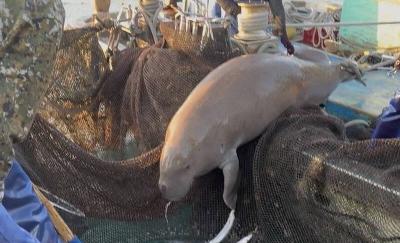An international conference on bio-terrorism jointly organized by the Department of Health and the Ministry of National Defense (MND)yesterday concluded that international collaboration was the best defense, with emphasis also being put on outbreak alert and response networks and the stockpiling and mobilization of drugs and vaccinations to effected areas in the shortest time possible.
Deputy Director of the Center for Disease Control (CDC), Shih Wen-yi (施文儀), said that Taiwan has made a slow start in the area of bio-terrorism defense, especially as little attention was given to these threats until the US anthrax attacks on Sept. 18, 2001, when letters containing anthrax bacteria were mailed to several media organizations' offices and two US senators, killing 5 people in total.
Director of the CDC, Steve Kuo (郭旭崧) said, "Taiwan is a relative new comer to bio-terrorism defense. We need help and international cooperation."
Kuo said that despite not being an official member of the WHO, Taiwan was still a meaningful participant due to revised international health regulations, which specify that "every country should have the will and capacity for early detection, rapid verification and appropriate response to disease threats in order to minimize the impact on global health and economy."
Kuo said that in a meeting he attended three weeks ago at the WHO, he asked whether Taiwan could be included as part of an outbreak alert and response network which works at a global, regional, and sub-regional level.
These systems consist of technical collaboration between existing institutions and networks, which pool human and technical resources for the rapid identification, confirmation and response to outbreaks of international importance.
David Trudhill, the Vice Director of Horizon, a company specializing in biodefense, emphasized the importance of stockpiling vaccines and mediations, saying that the US private sector has made the bio-defense industry one of the fastest growing in the country.
"In 2004 there was US$1billion spent on anthrax research alone. This year US$7.6 billion has been invested in bio-defense and this does not include [US] President George W. Bush's US$7.1 billion for the pandemic influenza plan," he said.
Trudhill also stressed the importance of prompt delivery of supplies, saying that the next step was to create a body in which countries worked together to deliver medical supplies to anywhere in the world within a short period of time.
He said that the US Strategic National Stockpile, which was created in 1999, had the ability to get medical supplies to anywhere in the country within 12 hours.
In outlining the current goals at a national level, Shih said that priorities included completing the establishment of a bio-terrorism related emergency response system, revising and reviewing anti bio-terrorism related regulations and policy, cultivating anti bio-terrorism talent and setting up inspection and protection equipment and capacity.
According to Kuo, the DOH are in the process of drafting plans for creating a bio-terrorism defense training center in Taoyuan.
At present Taiwan's national anti-terrorism system is modeled on a "3-3-1" system. The first "3" refers to different stages of crisis management which includes, crisis prevention, dealing with a crisis and crisis recovery. The second "3" refers to the different levels of risk, ranging from low to high. While the "1" refers to an attack and the emergency response activation.
Shih said that in the event of a crisis, the National Security System and Executive system would work in parallel and also cooperate to deal with it.
Whilst bio-terrorism used to be considered more of a national security issue, to be dealt with by the MND, Kuo said the DOH were now also actively involved.
Asked about what bio-terrorism attacks Taiwan was most under threat of, Kuo said either Anthrax or the small pox virus.

‘DENIAL DEFENSE’: The US would increase its military presence with uncrewed ships, and submarines, while boosting defense in the Indo-Pacific, a Pete Hegseth memo said The US is reorienting its military strategy to focus primarily on deterring a potential Chinese invasion of Taiwan, a memo signed by US Secretary of Defense Pete Hegseth showed. The memo also called on Taiwan to increase its defense spending. The document, known as the “Interim National Defense Strategic Guidance,” was distributed this month and detailed the national defense plans of US President Donald Trump’s administration, an article in the Washington Post said on Saturday. It outlines how the US can prepare for a potential war with China and defend itself from threats in the “near abroad,” including Greenland and the Panama

A wild live dugong was found in Taiwan for the first time in 88 years, after it was accidentally caught by a fisher’s net on Tuesday in Yilan County’s Fenniaolin (粉鳥林). This is the first sighting of the species in Taiwan since 1937, having already been considered “extinct” in the country and considered as “vulnerable” by the International Union for Conservation of Nature. A fisher surnamed Chen (陳) went to Fenniaolin to collect the fish in his netting, but instead caught a 3m long, 500kg dugong. The fisher released the animal back into the wild, not realizing it was an endangered species at

The High Prosecutors’ Office yesterday withdrew an appeal against the acquittal of a former bank manager 22 years after his death, marking Taiwan’s first instance of prosecutors rendering posthumous justice to a wrongfully convicted defendant. Chu Ching-en (諸慶恩) — formerly a manager at the Taipei branch of BNP Paribas — was in 1999 accused by Weng Mao-chung (翁茂鍾), then-president of Chia Her Industrial Co, of forging a request for a fixed deposit of US$10 million by I-Hwa Industrial Co, a subsidiary of Chia Her, which was used as collateral. Chu was ruled not guilty in the first trial, but was found guilty

The Chinese Nationalist Party (KMT) is maintaining close ties with Beijing, the Democratic Progressive Party (DPP) said yesterday, hours after a new round of Chinese military drills in the Taiwan Strait began. Political parties in a democracy have a responsibility to be loyal to the nation and defend its sovereignty, DPP spokesman Justin Wu (吳崢) told a news conference in Taipei. His comments came hours after Beijing announced via Chinese state media that the Chinese People’s Liberation Army’s Eastern Theater Command was holding large-scale drills simulating a multi-pronged attack on Taiwan. Contrary to the KMT’s claims that it is staunchly anti-communist, KMT Deputy